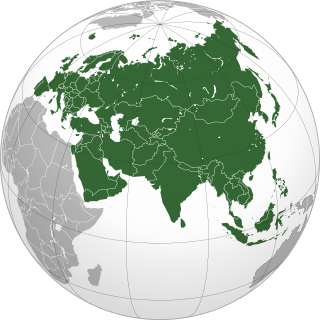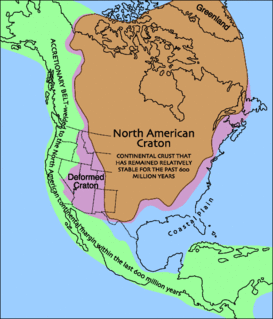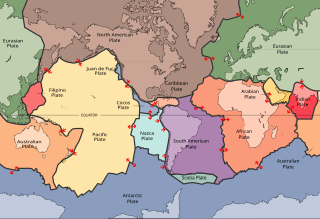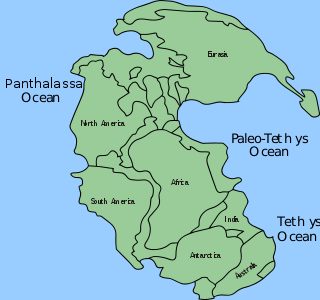
Pangaea Ultima (also called Pangaea Proxima, Neopangaea, and Pangaea II) is a possible future supercontinent configuration. Consistent with the supercontinent cycle, Pangaea Ultima could occur within the next 100 million to 200 million years. This potential configuration, hypothesized by Christopher Scotese, earned its name from its similarity to the previous Pangaea supercontinent. Scotese later changed Pangaea Ultima (Last Pangaea) to Pangaea Proxima (Next Pangaea) to alleviate confusion about the name Pangaea Ultima which could imply that it would be the last supercontinent. [1] The concept was based on examination of past cycles of formation and breakup of supercontinents, not on current understanding of the mechanisms of tectonic change, which are too imprecise to project that far into the future. "It's all pretty much fantasy to start with," Scotese has said. "But it's a fun exercise to think about what might happen. And you can only do it if you have a really clear idea of why things happen in the first place." [2]

In geology, a supercontinent is the assembly of most or all of Earth's continental blocks or cratons to form a single large landmass. However, many earth scientists use a different definition: "a clustering of nearly all continents", which leaves room for interpretation and is easier to apply to Precambrian times.

The supercontinent cycle is the quasi-periodic aggregation and dispersal of Earth's continental crust. There are varying opinions as to whether the amount of continental crust is increasing, decreasing, or staying about the same, but it is agreed that the Earth's crust is constantly being reconfigured. One complete supercontinent cycle is said to take 300 to 500 million years. Continental collision makes fewer and larger continents while rifting makes more and smaller continents.
Christopher R. Scotese is a geologist and paleogeographer. He received his PhD from the University of Chicago in 1985. He is the creator of the Paleomap Project, which aims to map Earth over the last billion years, and is credited with predicting Pangaea Ultima, a possible future supercontinent configuration. Of course later Dr. Scotese changed Pangaea Ultima to Pangaea Proxima to alleviate confusion about the name Pangaea Ultima, which would imply that it would be the last supercontinent.
Contents
Supercontinents describe the merger of all, or nearly all, of the Earth's landmass into a single contiguous continent. In the Pangaea Ultima scenario, subduction at the western Atlantic, east of the Americas, leads to the subduction of the Atlantic mid-ocean ridge followed by subduction destroying the Atlantic and Indian basin, causing the Atlantic and Indian Oceans to close, bringing the Americas back together with Africa and Europe. As with most supercontinents, the interior of Pangaea Proxima would probably become a semi-arid desert prone to extreme temperatures. [3]

Earth is the third planet from the Sun and the only astronomical object known to harbor life. According to radiometric dating and other sources of evidence, Earth formed over 4.5 billion years ago. Earth's gravity interacts with other objects in space, especially the Sun and the Moon, which is Earth's only natural satellite. Earth orbits around the Sun in 365.26 days, a period known as an Earth year. During this time, Earth rotates about its axis about 366.26 times.

A continent is one of several very large landmasses. Generally identified by convention rather than any strict criteria, up to seven regions are commonly regarded as continents. Ordered from largest in area to smallest, they are: Asia, Africa, North America, South America, Antarctica, Europe, and Australia.

Subduction is a geological process that takes place at convergent boundaries of tectonic plates where one plate moves under another and is forced to sink due to gravity into the mantle. Regions where this process occurs are known as subduction zones. Rates of subduction are typically in centimeters per year, with the average rate of convergence being approximately two to eight centimeters per year along most plate boundaries.






























